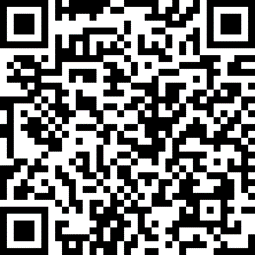股四头肌的强度、功能及运动模式可通过开链或闭链运动来增强。疼痛缓解:中等质量的证据证实锻炼比不进行锻炼可减轻髌股关节疼痛。[63]Timm KE. Randomized controlled trial of Protonics on patellar pain, position, and function. Med Sci Sports Exerc. 1998;30:665-670.http://www.ncbi.nlm.nih.gov/pubmed/9588606?tool=bestpractice.com[60]Clark DI, Downing N, Mitchell J, et al. Physiotherapy for anterior knee pain: a randomised controlled trial. Ann Rheum Dis. 2000;59:700-704.http://ard.bmj.com/content/59/9/700.longhttp://www.ncbi.nlm.nih.gov/pubmed/10976083?tool=bestpractice.com[81]McMullen W, Roncarati A, Koval P. Static and isokinetic treatments of chondromalacia patella: a comparative investigation. J Orthop Sports Phys Ther. 1990;12:256-266.http://www.jospt.org/doi/pdf/10.2519/jospt.1990.12.6.256http://www.ncbi.nlm.nih.gov/pubmed/18796869?tool=bestpractice.com受试者<200名的随机对照临床试验(RCT)、受试者>200名且方法学存在缺陷的随机对照临床试验(RCT)、方法学存在缺陷的系统评价或者高质量的观察性(队列)研究。目前机制未明,可能的原因为股四头肌肌力增强改变了髌骨的轨迹,也可用接触位置的精细改变及压力分布变化来解释观察到的获益。[82]Besier TF, Fredericson M, Gold GE, et al. Knee muscle forces during walking and running in patellofemoral pain patients and pain-free controls. J Biomech. 2009;42:898-905.http://www.ncbi.nlm.nih.gov/pmc/articles/PMC2671570/http://www.ncbi.nlm.nih.gov/pubmed/19268945?tool=bestpractice.com
开链运动包括膝关节伸直练习,闭链运动包括弓箭步、划墙练习及腿部推蹬机练习。闭链运动更受青睐,因为其更好地复制了运动员的运动需求,需要多肌群的同时收缩,且关节应力更接近功能位。[67]Irish SE, Millward AJ, Wride J, et al. The effect of closed-kinetic chain exercises and open-kinetic chain exercise on the muscle activity of vastus medialis oblique and vastus lateralis. J Strength Cond Res. 2010;24:1256-1262.http://www.ncbi.nlm.nih.gov/pubmed/20386128?tool=bestpractice.com[68]Bennell K, Duncan M, Cowan S, et al. Effects of vastus medialis oblique retraining versus general quadriceps strengthening on vasti onset. Med Sci Sports Exerc. 2010;42:856-864.http://www.ncbi.nlm.nih.gov/pubmed/19997004?tool=bestpractice.com
有良好的证据证实开链和闭链运动同样有效。疼痛缓解:良好质量的证据证实开链和闭链运动在减轻疼痛方面同样有效。[67]Irish SE, Millward AJ, Wride J, et al. The effect of closed-kinetic chain exercises and open-kinetic chain exercise on the muscle activity of vastus medialis oblique and vastus lateralis. J Strength Cond Res. 2010;24:1256-1262.http://www.ncbi.nlm.nih.gov/pubmed/20386128?tool=bestpractice.com[68]Bennell K, Duncan M, Cowan S, et al. Effects of vastus medialis oblique retraining versus general quadriceps strengthening on vasti onset. Med Sci Sports Exerc. 2010;42:856-864.http://www.ncbi.nlm.nih.gov/pubmed/19997004?tool=bestpractice.com[69]Stiene HA, Brosky T, Reinking MF, et al. A comparison of closed kinetic chain and isokinetic joint isolation exercise in patients with patellofemoral dysfunction. J Orthop Sports Phys Ther. 1996;24:136-141.http://www.ncbi.nlm.nih.gov/pubmed/8866272?tool=bestpractice.com[70]Witvrouw E, Lysens R, Bellemans J, et al. Open versus closed kinetic chain exercises for patellofemoral pain: a prospective, randomized study. Am J Sports Med. 2000;28:687-694.http://www.ncbi.nlm.nih.gov/pubmed/11032226?tool=bestpractice.com[71]Wijnen LC, Lenssen AF, Kuys-Wouters YM, et al. McConnell therapy versus Coumans bandage for patellofemoral pain: a randomised pilot study. Ned Tijdschr Fysiother. 1996;(special issue):12-17.[72]Gaffney K, Fricker P, Dwyer T, et al. Patellofemoral joint pain: a comparison of two treatment programmes. Excel. 1992;8:179-189.[73]Smith TO, Bowyer D, Dixon J, et al. Can vastus medialis oblique be preferentially activated? A systematic review of electromyographic studies. Physiother Theory Pract. 2009;25:69-98.http://www.ncbi.nlm.nih.gov/pubmed/19212898?tool=bestpractice.com系统评价或者受试者>200名的随机对照临床试验(RCT)。
无论采取何种类型的锻炼,增强肌肉耐力及强度,对于耐力型运动员非常重要。高剂量高重复性的锻炼比低剂量低重复性的锻炼更有效。[83]Østerås B, Østerås H, Torstensen TA, et al. Dose-response effects of medical exercise therapy in patients with patellofemoral pain syndrome: a randomised controlled clinical trial. Physiotherapy. 2013;99:126-131.http://www.ncbi.nlm.nih.gov/pubmed/23219636?tool=bestpractice.com高剂量高重复性的训练可提供良好的长期疗效,尤其对髌股关节疼痛综合征的疼痛缓解和提高功能更为有效。[84]Østerås B, Østerås H, Torstensen TA. Long-term effects of medical exercise therapy in patients with patellofemoral pain syndrome: results from a single-blinded randomized controlled trial with 12 months follow-up. Physiotherapy. 2013;99:311-316.http://www.ncbi.nlm.nih.gov/pubmed/23764516?tool=bestpractice.com

